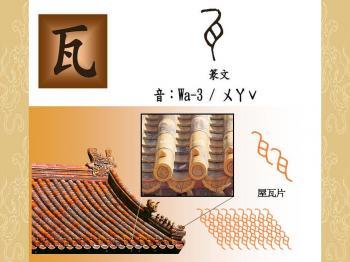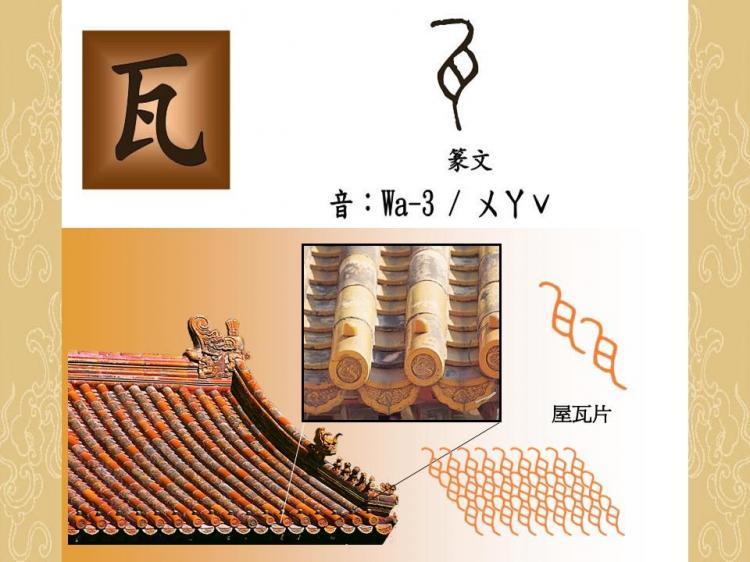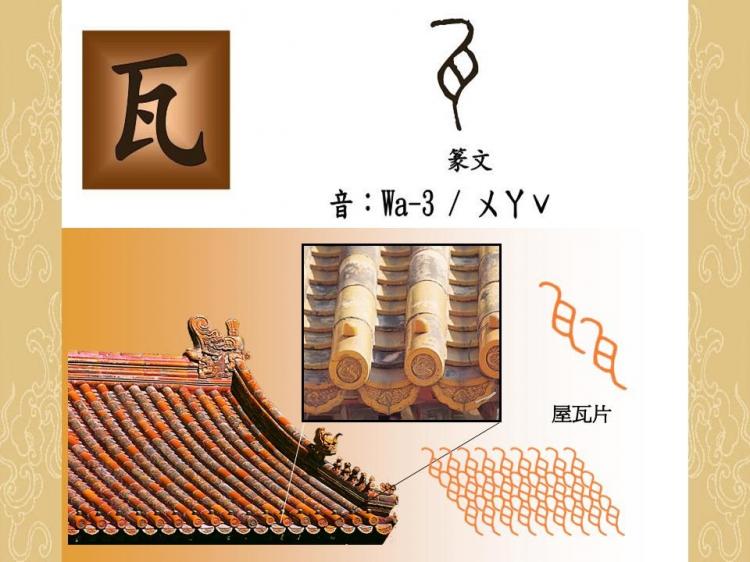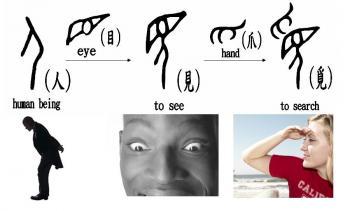The character 瓦 (wǎ) means tile, the ceramic pieces used for covering roofs. A tiled roof is a major characteristic of traditional Chinese architecture. According to historical records, in the Xia Dynasty, about 4000 years ago, Chinese people were already producing tiles. Archeologists have unearthed tiles produced in the Western Zhou Dynasty (1046 B.C.–771 B.C.)
The character 瓦 was not found in Oracle Bone Inscriptions (Jia Gu Wen) or Bronze Inscriptions (Jin Wen), which suggests the possibility that tiles were not generally used until the Zhou Dynasty. The earliest appearance of the character 瓦 is found in the Seal Script (Zhuan Wen), in which it resembles a piece of tile.
As tiles are laid in overlapping rows, damage to a few individual pieces can cause the collapse of a large area, or even the entire roof. So the Chinese word 瓦解 (wǎ jiě), literally translated as “tile disintegrate,” is used to describe complete disintegration.
 Tile manufacturing was well developed in ancient China. Tiles were made into various artistic forms and painted with colorful glazes, and became a lively part of Chinese architecture.
Tile manufacturing was well developed in ancient China. Tiles were made into various artistic forms and painted with colorful glazes, and became a lively part of Chinese architecture.
瓦 can also refer to earthenware, ceramics or pottery, such as 瓦盆, earthenware pot. Ceramics or porcelain is called 瓷 (cí) in Chinese. Ceramic production originated in China, where it flourished into a brilliant art form cherished for centuries by people all around the world. It was so pre-eminent in the Western world that China the country was named after it.
Explaining 瓷:Combining symbols 瓦 and 次
In the character 瓷 (simplified form of 瓷), the 次 (cì) on top indicates the pronunciation, while the 瓦 indicates its meaning. Another form of 瓷 is 珁, which is formed by 玉, jade, and 瓦, earthenware. While the form of 瓷 reflects pronunciation of the word, 珁 is associated with visual effect, implying “earthenware that looks like jade.” This combination is a perfect depiction of the fine, smooth glazing and opaque texture of ceramics. However, the character 珁 is no longer in use in modern Chinese.
The character 次 is a common character in Chinese. A later article will give a detailed introduction to this character.





Friends Read Free